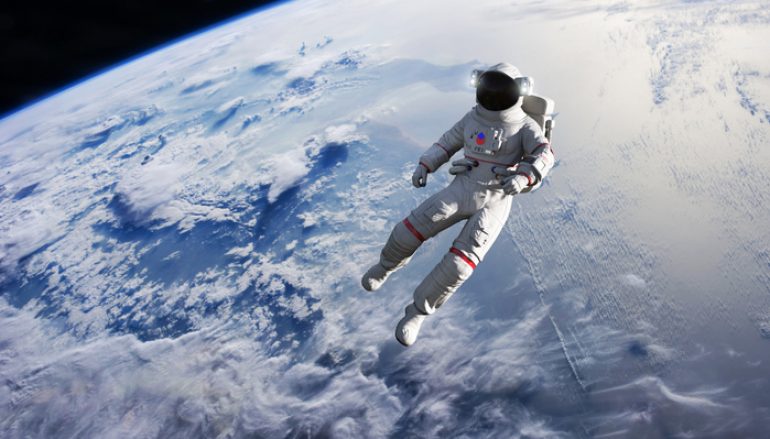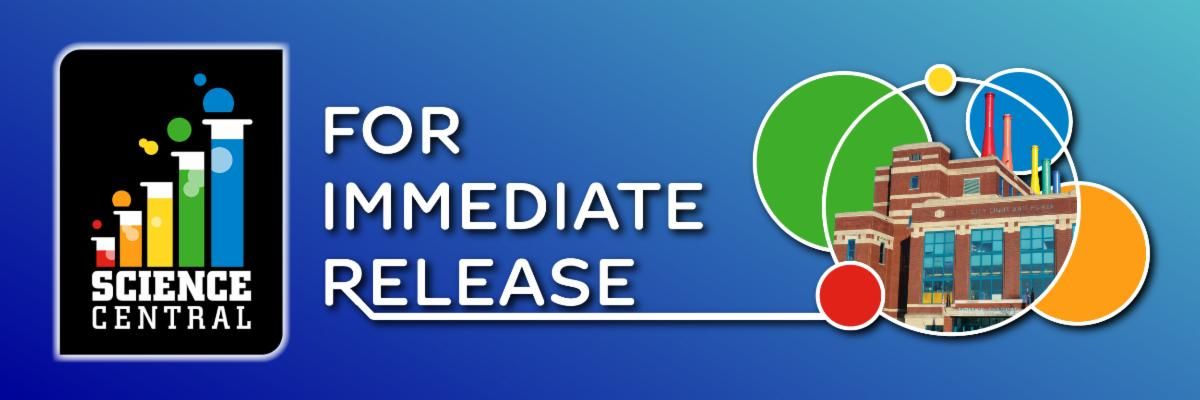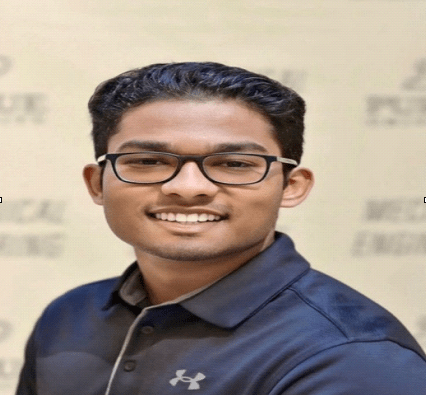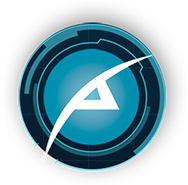What Is INSGC?
Indiana Space Grant Consortium is one of the 52 Consortia part of the National Space Grant College and Fellowship Program. In the state of Indiana, INSGC is a source of NASA-related information, awards and programs.
The consortium works to carry out education, research, and public outreach activities in science, mathematics, engineering, and technology (STEM) related to space, aeronautics, aviation, and Earth system science.
Consisting of 26 different affiliates including colleges, universities, businesses, and other private and public sector institutions, INSGC promotes aerospace education and career training by
-
- Supporting STEM students through various scholarship, internship and fellowship opportunities
- Assisting faculty and students in their development of skills in STEM related fields
- Offering experiential training aligned with NASA Strategic Enterprises, and
- Inspiring public interest in aerospace-related disciplines and lifelong learning through partnerships with educators at all levels...
Here's why the Space Grant is important!

ANNOUNCEMENT!
Moon to Mars exploration Systems and Habitation 2026 Academic Innovation Challenge!!

Proposals Due Date: April 28, 2025
Description
The Moon to Mars exploration Systems and Habitation Academic Innovation Challenge is a university-level challenge designed to develop strategic partnerships and collaborations with universities. It has been organized to help bridge strategic knowledge gaps and increase knowledge in capabilities and technology risk reduction related to NASA’s vision and missions. The competition is intended to link with senior- and graduate-level design curricula that emphasize hands-on design, research, development, and manufacturing of functional prototypical subsystems that enable functionality for space habitats and deep space exploration missions. NASA will directly benefit from the challenge by sponsoring the development of innovative concepts and technologies from universities, which will result in novel ideas and solutions that could be applied to exploration.
Innovation is the keystone to this challenge. Universities and investigators not normally associated with the aerospace industry are encouraged to consider their potential contribution to changing the way the space industry views the solution space.
NASA’s Mars Campaign Office (MCO) anticipates offering multiple awards up to $15k - $50k each to design and produce studies or functional products of interest to NASA (see Section 3.2, M2M X-Hab Proposal Topic List) as proposed by university teams according to their interests and expertise. The prototypes produced by the university teams (examples of which are shown in Figure 1) may be integrated into existing NASA-built operational prototypes. Universities interested in participating will submit M2M X-Hab proposals, which will be reviewed by technical experts; subsequent down-selection will determine which projects will be funded. M2M X-Hab university teams will be required to complete their products for evaluation by NASA MCO mentors in May 2026. Universities may form collaborations to perform as a single distributed project team.
Students in the Critical Path
The M2M X-Hab Academic Innovation Challenge has a unique approach to student involvement, in that the student team is placed in the NASA mission critical path for the product or technology that they develop alongside NASA researchers. Teams are required to go through a series of NASA-standard assessments as other NASA engineering products, including a System Definition Review (SDR), a Preliminary Design Review (PDR), and a Critical Design Review (CDR). With this approach, NASA is putting a great deal of responsibility on the students. This in turn gives the students a bigger stake in the development of space technologies that likely will form the basis for future systems and technologies that will be flown in space.
Eligibility
Proposals will be accepted from faculty who are U.S. citizens and currently teach an Accreditation Board for Engineering and Technology (ABET)-accredited engineering senior or graduate design, industrial design, or architecture curriculum teaming course at a university affiliated with the National Space Grant College and Fellowship Program, or other US accredited university. Multidisciplinary, multi-departmental, and/or multi-institutional teaming collaborations are highly encouraged.
For more information click this link Moon to Mars eXploration Systems and Habitation (M2M X-Hab) 2026 Academic Innovation Challenge - National Space Grant Foundation
The Andromeda Movement Scholarship
The Andromeda Movement supports Indiana students pursuing exciting careers in the field of space exploration! Applications are being accepted now!
Andromeda Scholars aim to answer the most intriguing questions that humankind has wondered for thousands of years:
Will we ever colonize another planet?
Can we build spacecraft that can travel to other solar systems?
Will we ever discover alien lifeforms?
IMPORTANT INFORMATION:
Who is eligible:
-
High school, undergraduate, and graduate students pursuing their degree at a school in Indiana.
-
Must be a US citizen.
-
Preference will be given to students from Indiana and special preference will be given to students from Madison country.
How to apply:
To apply, briefly (1-2 pages) tell us about your favorite aspect of space exploration! Some examples are listed below. Be creative and have fun! In this essay, also please include a brief summary (~1 paragraph) of what got you interested space and your career aspirations.
-
Examples of scientific topics: Spacesuit / spacecraft design, lunar colonies, Mars exploration, spacecraft propulsion, nuclear fission, natural resources, the economical and political future of funding spaceflight, or constructing a space elevator. Anything related to space!
Please also include:
-
A copy of your most recent transcript (highschool or college)
-
Your curriculum vitae (CV)
-
(Optional) A letter of recommendation from a source that can speak to the applicant's personal character
When to apply
-
Applications for the 2025-26 school year are due by May 23, 2025.
-
Applications can be emailed to: AndromedaMovementORG@gmail.com
Funding
-
Funding amounts depend on the individual, but typically are between $500-$1,500 per year and are renewable.
-
The Andromeda Movement is hoping to fund 2-3 students per year
2025 IndianaView Student Scholarship
The IndianaView Student Scholarship Program provides an opportunity for participants at our member institutions to support the goals and objectives of IndianaView and AmericaView. IndianaView will award up to six $750 scholarships to six different students. The purpose of the scholarship program is to promote student development in remote sensing and other geospatial technologies.
Who can apply?
Undergraduate or graduate students using remote sensing and/or other geospatial technologies in their research at any of the IndianaView educational institutions. Scholarship applicants must be endorsed by a faculty member from one of these educational institutions.
DUE February 28, 2025. The funding for the scholarship will need to be used by August 31, 2025. For more information download below file.

NASA Summer Internships 2025
Applications currently being accepted till Feb 2025
The NASA Indiana Space Grant Consortium (INSGC) supports Internships to the
NASA Space Centers across the U.S. NASA centers select students from the applications submission through the NASA STEM Gateway portal. You must be a senior in HS, or a FT college student to apply.
Eligibility: Students must be attending one of INSGC affiliate Universities; (see www.insgc.org for a list), a US Citizenship; enrolled in STEM discipline major, with at least a 2.5 GPA
See below attachment and NASA website for more details: https://stemgateway.nasa.gov/s/
Introducing NASA's Luna Recycle Challenge
Our newest competition, NASA’s Luna Recycle Challenge!
This $3 million competition focuses on the design and development of recycling solutions that can reduce solid, inorganic waste and improve the sustainability of longer-term lunar missions. We're looking for innovative thinkers, engineers, students, scientists, hobbyists, and enthusiasts to revolutionize how we manage resources in space and inspire better approaches for terrestrial recycling here on Earth. The competition spans two phases over about three years, and teams can participate in either (or both!) competition tracks: prototype build or digital twin.
We will host three informational webinars throughout the course of Phase 1, with the next one taking place in mid-November (details will be posted on social media and at lunarecyclechallenge.ua.edu).
Don’t hesitate to check our website FAQ or reach out to lunarecycle@ua.edu if you have any questions. To follow along with the challenge on social media, follow @NASAPrize on Facebook, X, and Instagram. Keep up with LunaRecycle through joining our email list.
Click download below for flyer
RockOn 2025 applications
RockOn will again be conducted by NASA Wallops Flight Facility from June 20 to 25, 2025 with the launch expected on June 26, 2025
Applications Due: February 14, 2025

NASA TechRise Challenge Overview:
The 2024-25 challenge invites student teams in sixth-12th grade to submit experiment ideas to fly on a high-altitude balloon flight. It Includes teacher professional development opportunities and free educational resources to foster STEM in the classroom. Sixty winning teams will also receive $1500 to build their experiment, a spot to test it on a NASA-sponsored flight, and weekly technical support from our NASA TechRise advisors. Additionally, all challenge entrants will be invited to participate in a live coding show.
No experience is needed to participate, and we encourage teams of all skill levels to apply. Challenge resources (including videos, slide decks, and educator pacing guides) can all be found on the challenge website HERE. Additionally, you can view a teacher testimonial video HERE from a few educators who participated in last year's TechRise Challenge.
Share this exciting opportunity with your community:
1. Share the Challenge:
- The NASA TechRise Student Challenge Website can be viewed HERE and Challenge Flyer HERE. TEACHERS can go here and REGISTER TO PARTICIPATE.
- Use the challenge one-pager HERE to access email, newsletter, and social media resources to help you share this opportunity.
2. Share/Sign Up to Participate in PD:
NASA TechRise professional development workshop booking link HERE and sign up to participate. These interactive workshops will provide instructors with everything they need to know to utilize the free NASA TechRise instructional resources and get their students involved with the challenge.
3. Let Us Know How We Can Help: Email us at support@futureengineers.org
PGS Fellowship's Class of 2025
What: Applications are now open for the PGS Fellowship's Class of 2025 (applications due October 1st).
For Whom: All Black and African-American undergraduates who are US Persons -- citizens, nationals, permanent residents, or lawfully admitted refugees or asylum seekers -- are eligible.
The PGS Fellowship serves students interested in working in any facet of aerospace: air or space; engineering, science, business, policy, or communications; commercial or government; et cetera. Admission is very competitive but is not based on strict GPA thresholds. In addition to fellowship placement, students receive a $2500 scholarship.
Thus far, 141 Black undergraduates from 68 universities around the USA have received a Patti Grace Smith Fellowship. The program has paid out more than $390K in scholarships and helped place each of these Fellows in a challenging, paid internship that helps them begin their aerospace career journey.
Learn More: All undergraduates and those who teach and advise them are invited to an information session to learn about the Patti Grace Smith Fellowship (pgsfellowship.org), a non-profit program that provides scholarships, mentorship, internship opportunities, and more to Black and African-American undergraduates who aim to start a career in aerospace.
This information session will provide an overview of the program, its history, and the Fellow experience. Some alumni of the Fellowship will be on hand to answer questions and offer advice.
INSGC Provides Funding
By: Derek Thach
With the funding provided by INSGC, I wanted to experience more in person events at NASA since my entire internship was virtual. I utilized this money to book a flight to Florida and experience a few days working in the office with the rest of the PX-A team while being escorted by Felix. This experience was stunning as they took me around to various parts of the KSC campus including the Visitor Complex and executive offices. The team treated me extremely well and it was exciting to be able to present parts of my assignment to the team in the conference room. Another experience I got when traveling to the KSC office was watching my first rocket launch.
The Delta IV rocket that launched on April 9th, 2024 was fascinating to watch in person and I grinned as I felt the room around me rumble and shake to the rocket lifting off the ground. Being surrounded by people at NASA that were so passionate about their work was inspiring to me. I haven’t experienced a lot of working environments that provide spaces for employees to explore their passions and NASA was able to provide that at KSC. I was extremely proud to say that I got to see my team in person and experienced this past semester becoming closer as a team and as a little family away from home.


Meet our NASA Indiana Space Grant 2024 Spring Interns
It is with great pleasure and excitement that we extend our heartfelt congratulations to each student for securing an internship opportunity with Indiana Space Grant for 16 weeks. Your achievement is a reflection of your outstanding abilities, dedication, and passion.
As interns at Indiana Space Grant, you are embarking on a journey that promotes hands-on learning, collaboration with experts, and an immersive experience in the fascinating world of aerospace. We are confident that your time with us will be both rewarding and enriching, contributing not only to your personal growth but also to INSGC.
Jason Packard
Purdue University
NASA Internship at Langley Research Center.
Fun Fact-Loves to run marathons.

Aaron Fernandez
Purdue University NASA
Internship at Godard Space Flight Center.
Fun Fact: I spent a summer working at a naval shipyard and got to try out the cozy sleeping quarters!

Lauren Harris
IUPUI
NASA Spring 2024 Internship at Goddard Space Flight Center.
Fun Fact: I like to crochet and I am working in my first sweater.

Pruthvi Patel
Purdue University
NASA 2024 at Ames Research Center.
Fun Fact: I enjoy hiking, skiing, soccer, basketball, tennis, and more!

Derek Tran Thach
Indiana University
NASA Internship Spring 2024 at Kennedy Space Center.
Fun Fact: I swam to Alcatraz with my dad when I was 14 for a Father's Day event!

VALPARAISO UNIVERSITY OBSERVATORY
PUBLIC OPEN HOUSE
SCHEDULE – Winter/Spring 2024
The Department of Physics & Astronomy, Valparaiso University continues its series of public astronomy programs for Winter/Spring 2024. In addition to our regular Observatory Open House program, we will host a public demonstration of our remote use of the SARA Telescope in Chile, as listed below. Each Open House program will include telescope viewing at the VU Observatory (clear nights) or a constellation and slide show program at the VU Planetarium (cloudy nights). These are free and the public is invited.
NASA L'SPACE Program
The NASA L'SPACE Program is a free, online, interactive experience open to undergraduate STEM students interested in pursuing a career with NASA or other space organizations.
L'SPACE consists of two Academies - the Mission Concept Academy, and the NASA Proposal Writing and Evaluation Experience Academy. Students may participate in one Academy per semester. Each 12-week Academy is designed to provide unique, hands-on learning and insight into the dynamic world of the space industry. Students can expect to learn NASA mission procedures and protocols from industry professionals as they collaborate with fellow team members to complete mission-related team-projects.
Requirements for participation: Students must be enrolled in a US college or University as an undergrad (graduate students may apply to NPWEE); have access to a computer with internet, webcam, and headset capabilities; and have time to devote an additional 6-10 hours per week, beyond the online session requirements, towards team projects.
2023-24 NASA-INSGC Fellowship Awardees!
Each year, NASA-Indiana Space Grant Consortium selects outstanding students across the state to be awarded Fellowship funds for the academic year. The following students were selected from an application/recommendation process and we are proud of their accomplishments thus far.
Please help us congratulate these outstanding students!
- Moshamma Mijjum-not pictured
- Lexi Gault -IU
- Charles D’Onofrio -PUWL
- Ivana Daniels -IU
- Bode Hoover- IU
- Hunter Vannier-PU
- David McFarland-BSU
- Michaela Loveless -IU
- Brooke Kimsey Miller-IU
- Jared Newton-PU
- Moshamma Mijjum-PU
Grant funding Trine research to help make space travel safer

As efforts intensify to increase the number of manned missions into space, Trine University undergraduate students will once again conduct research to help make such missions safer.
The Indiana Space Grant Consortium (INSGC) has awarded nearly $15,000 to the university to fund an undergraduate research project that will design a model to investigate the impact of the harsh environment of space on lymphatic vessels in the immune system.
Using a similar grant last year, Trine students engineered models that mimic blood tissue to assess the impact on those tissues of the increased oxygen required prior to a spacewalk.
Max Gong, Ph.D., assistant professor in the Bock Department of Biomedical Engineering, will oversee a research team of eight students representing multiple engineering disciplines.
Team members are: Amy Apgar, a biomedical engineering major from Wickliffe, Ohio; Isabella Didonna, a biomedical engineering major from Knox, Indiana; CJ Elston, a chemical engineering major from Plainfield, Indiana; Destany Garcia Ortiz, a design engineering technology major from Indianapolis; Upasana Shrestha, a biomedical engineering major from Nepal; Lilly Speier, a biomedical engineering major from Hartland, Michigan; Aaron Streit, a biomedical engineering major from New Paris, Indiana; and Aiden Theobald, a biomedical engineering major from Waveland, Missouri.
Where no one has gone before
Gong said studies have been conducted investigating the effects of oxidative stress caused by space environmental factors — the imbalance between reactive chemicals formed from oxygen and the body’s ability to cope with them that occurs when oxygen is increased or decreased — on organ systems and immune cells. However, there is minimal research into its impacts on structural components of the immune system such as lymphatic vessels.
“To advance our understanding in this area, engineering students at Trine University propose to develop models to investigate the effect of induced oxidative stress on the lymphatic system, and consequently, on the immune system,” he said.
The team’s goal will be to develop models of lymphatic vessels that better represent actual human vessels. The group will generate its models using human lymphatic endothelial cells (HLECs) acquired from commercial research distributors.
The team will expose models to low- and high-oxygen environments simulating changes in environmental pressure an astronaut may experience during spacewalks and gather data on cell viability and growth as well as secretion of cytokines, substances typically secreted by immune cells. The group also will record data for cultures that include its models along immune cells in the same environment.
Members will compile data to be shared at academic conferences and in research journals.
The Indiana Space Grant Consortium was created in 1991 under NASA’s National Space Grant College and Fellowship Program. The Space Grant national network includes organizations working to expand opportunities for Americans to learn about and participate in NASA’s aeronautics and space projects by supporting and enhancing science and engineering education, research and public outreach efforts.
Photo: Max Gong, Ph.D., left, assistant professor in the Bock Department of Biomedical Engineering at Trine University, will oversee a team of eight students designing a model to investigate the impact of the harsh environment of space on lymphatic vessels in the immune system. From front to back are Amy Apgar, Destany Garcia Ortiz, Upasana Shrestha, CJ Elston, Isabella Didonna, Lilly Speier, Aaron Streit and Aiden Theobald. (Photo by Dean Orewiler)
INSGC Photo Of The Day
February 7, 2025

Funding
Funding source for INSGC Fellowships, Internships; Research and Outreach Project funding for Higher Education, K-12, and Informal Education through INSGC affiliates.
Need Funding?
Browse through the opportunities we offer and apply today!
K-12
Indiana Space Grant Consortium supports K-12 education by offering space based resources to excite children about STEM and NASA education. You can find these resources below.
Educational Resources


Teacher Resources
Educational Programs

Higher Education
INSGC higher education affiliates throughout Indiana with eligible students, must be a US citizen, enrolled full-time as a collegiate student, be involved in STEM related research or STEM education project, are eligible to apply for scholarship/fellowship.
View our Academic pages for more information.
Looking For Career Opportunities?
INSGC currently has a career page with information
and a few valuable resources!
The INSGC twitter page is linked above. There will also be a link to our INSGC Facebook page shortly.

























